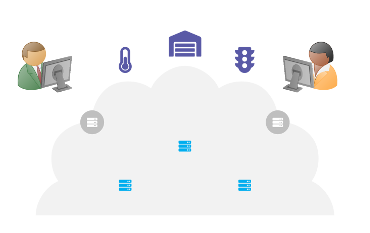Edge Computing

DETAILS
Edge systems
Hardware at the network edge provides an intermediate location for processing to occur between the servers in the cloud and the end device, be it sensor or actuator. Software for edge systems can be deployed using network-based approaches such as Software-Defined Networking (DN), Network Function Virtualisation (NFV) and Cloud-native Network Functions (CNF). Alternatively DevOps approaches such as Kubernetes can be used. The hardware at the edge must be designed to support the edge processing requirements, and may include hardware accelerators such as FPGAs to deliver the maximun performance at minimum economic and energy cost
Edge processing
Edge processing can reduce load on central servers and improve response times. The optimal means of decomposing the global task of an IoT application across cloud resources, edge nodes and the limited processing capabilities of end devices is one of the most challenging in distributed systems today.
Selected Publications
• Z. Shamszaman and M. Ali, "Enabling cognitive contributory societies using SIoT:: QoS aware real-time virtual object management", Journal of Parallel and Distributed Computing, vol. 123, pp. 61-68, 2019.• P. Patel, M. Ali and A. Sheth, "On using the intelligent edge for IoT analytics", IEEE Intelligent Systems, vol. 32, pp. 64-69, 2018.
• D. Molloy, Exploring Raspberry Pi: Interfacing to the real world with embedded Linux, Wiley, 2016.
• D. Molloy, Exploring BeagleBone: Tools and techniques for building with embedded Linux, Wiley, 2019.
• C. Garry and D. Molloy, "A software/hardware co-design framework for the 'Internet of Eyes'", 2019 IEEE 5th world forum on Internet of Things (WF-IoT), 2019.








